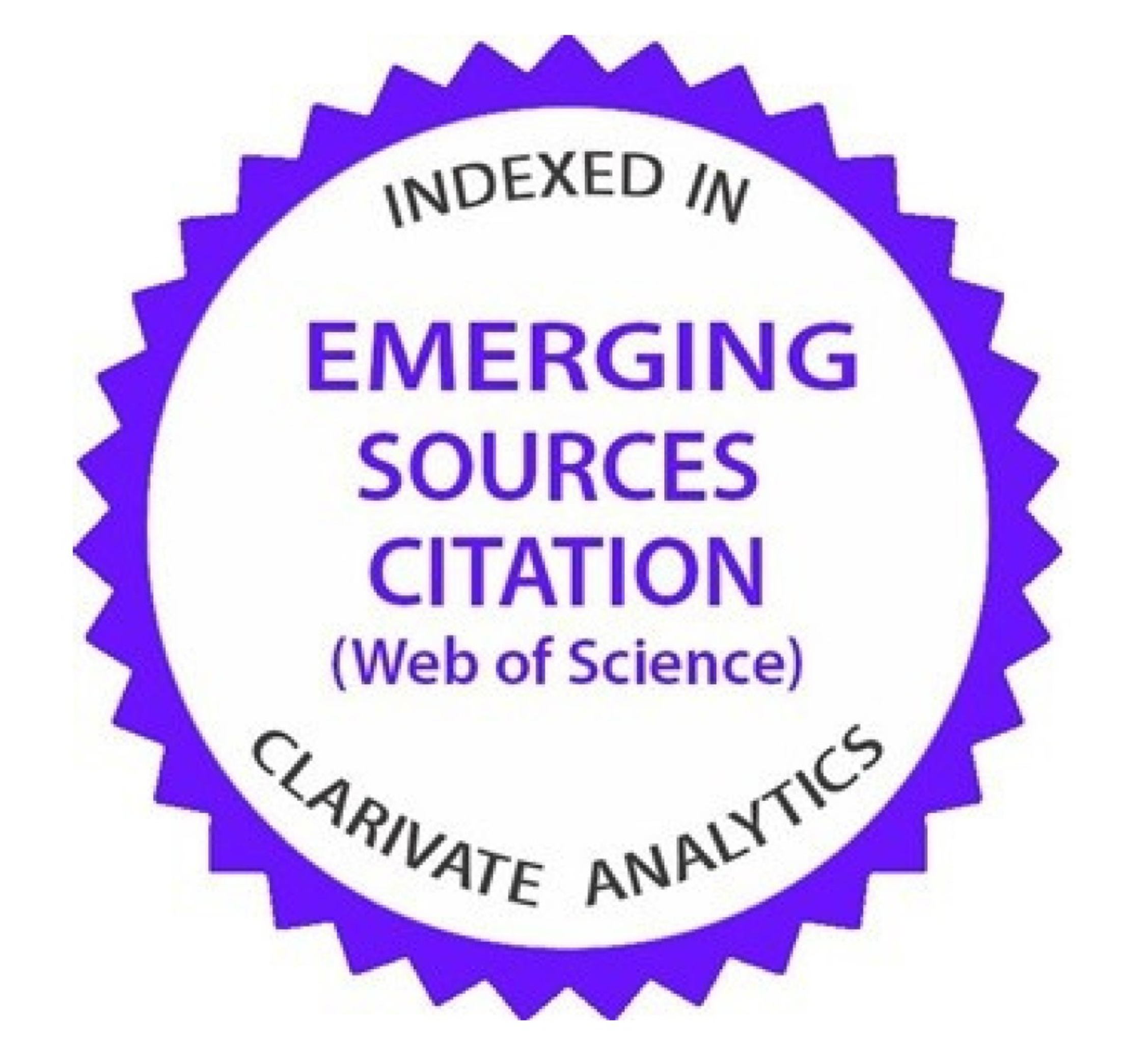Housewives' lifestyle and behavior of debt dependency on bank thitil
Downloads
The fulfillment of household needs can implement various strategies, including debt strategy. A money lending service becomes an attraction to fulfilling the needs of life. The money lending service on credit is known as bank thitil by Javanese. This study presents the factors that make housewives have a dependency behavior on bank thitil loans. This dependency behavior is examined from the perspective of the planned behavior theory by Ajzen. This study used a qualitative approach and the subjects of this study were housewives who have debt in bank thitil. Some factors encourage the dependency behavior of housewives on bank thitil loans. This research finds that the implementation of Ajzen's planned behavior theory in analyzing the factors of indebted housewives is integrated with some factors, including (1) the influence of attitudes that assume the bank thitil provides benefits, (2) subjective norms in the form of lifestyle and environmental vicinity, and (3) social control that supports the housewives in borrowing money from the bank thitil.
Ahmad T, Erowati D, & Wijayanto (2010) Upaya penanggulangan kemiskinan berbasis pemberdayaan masyarakat lokal. Politika: Jurnal Ilmu Politik 1 (1):134-158.
Ajzen I (1991) The theory of planned behavior. Organizational Behavior and Human Decision Processes 50 (2):179-211. https://doi.org/10.1016/0749-5978(91)90020-T.
Ajzen I (2006) Perceived behavioral control, self-efficacy, locus of control, and the theory of planned behavior. Journal of Applied Social Psychology (32) 4:665-683. https://doi.org/10.1111/j.1559-1816.2002.tb00236.x.
Anderson MH & Jackson R (2018) Evaluating options for the regulation of payday loans. The Journal of Applied Business Research 34 (1):131-142. https://doi.org/10.19030/jabr.v34i1.10100.
Badri S & Actini CN (2012) Implikasi operasional bank keliling terhadap eksistensi koperasi pengusaha batik Tembayat Kecamatan Bayat Klaten (studi empirik dalam mekanisme penyaluran kredit). Jurnal Orasi Bisnis 8 (2):27-36.
Bhutta N, Goldin J, & Homonoff T (2016) Consumer borrowing after payday loan bans. Journal of Law and Economics 59 (1):225-229. https://doi.org/10.1086/686033.
BPS (2020) Profil kemiskinan di Indonesia. [Accessed 07 March 2020]. https://www.bps.go.id/website/images/Profil-Kemiskinan-di-Indonesia-September-2020-ind.jpg.
CPLA (2016) Canadian Payday Loan Association (CPLA). [Accessed 07 April 2020]. https://www.cpla-acps.ca/.
Dara UD (2017) Hutang piutang di kalangan buruh perempuan di Desa Jetis Kecamatan Jetis Kabupaten Mojokerto. Thesis, Universitas Airlangga, Surabaya.
Denan Z, Othman AA, Ishak MNI, Kamal MFM, & Hasan MH (2015) The theory of planned behavior and self-identity factors drive graduates to be indebtedness. International Journal of Social Science and Humanity 5 (4):345-346. https://doi.org/10.7763/IJSSH.2015.V5.477.
Elisa R & Zuhroh I (2017) Peran bank thitil dalam kehidupan masarakat ekonomi lemah (studi kasus penyaluran kredit oleh bank thitil terhadap pedagang sayur di Pasar Kesamben Kabupaten Blitar). Jurnal Ilmu Ekonomi 1 (1):1-15. https://doi.org/10.22219/jie.v1i1.5399.
Giannetti C, Madia M, & Moretti L (2014) Job insecurity and financial distress. Applied Financial Economics 24 (4):219-233. https://doi.org/10.2139/ssrn.1991899.
Gunawan R (2016) Kemiskinan perempuan dan renternir di perkotaan serta penangulangannya. In: Berbincang tentang Perempuan dan Pendidikan untuk Kesetaraan Gender. Pusat Pelayanan tepadu Pemberdayaan Perempuan dan Anak. http://repository.uhamka.ac.id/10/.
Herispon (2018) Analisis faktor-faktor yang mempengaruhi perilaku utang rumah tangga (sebuah kajian literatur). Jurnal Ilmiah Ekonomi dan Bisnis 15 (2):89-101 https://doi.org/10.31849/jieb.v15i2.1156.
Hudoro P, Findi M, & Ayyubi SE (2014) Faktor-faktor yang memengaruhi pemilihan pinjaman dengan sistem rente di desa studi kasus: Desa Panulisan Timur Kecamatan Dayeuhulur Kabupaten Cilacap (periode tahun 2013-2014). Jurnal Al-Muzara'ah 2 (2):196-217.
Indahsari N, Purwaka, & Hartati S (2018) Strategi bertahan hidup perempuan pedagang asongan (studi kasus perempuan pedagang asongan di Stasiun Selero Kelurahan Lubuklinggau Ilir Kecamatan Lubuklinggau Barat II, Kota Lubuklinggau, Provinsi Sumatera Selatan). Jurnal Sosiologi Nusantara 4 (1):139-151. https://doi.org/10.33369/jsn.4.1.39-52.
Lestari Y, Hartati S, & Nopianti H (2016) Pemenuhan kebutuhan hidup rumah tangga petani miskin (studi kasus pada petani penggarap di Dusun II Talang Watas Desa Muara Langkap Kecamatan Bermani Ilir, Kabupaten Kepahiang). Jurnal Sosiologi Nusantara 2 (2):94-103. https://doi.org/10.33369/jsn.2.2.94-103.
Lim Y, Bickham T, Dinecola CM, Broussard J, Webber BE, & Gregory A (2015) Payday loan use and consumer wellbeing: What consumers and social workers need to know about payday loans. Journal of Poverty 18 (4):379-398. https://doi.org/10.1080/10875549.2014.951906.
Lindern E & Mosler H (2014) Insights into fisheries management practices: Using the theory of planned behavior to explain fish stocking among a sample of Swiss anglers. Plos One 9 (12):1-20.
Livingstone SM & Lunt PK (1992) Predicting personal debt and debt repayment: Psychological, social, and economic determinants. Journal of Economic Psychology 13 (1):111-134. https://doi.org/10.1016/0167-4870(92)90055-C.
Mardiana (2019) Faktor-faktor yang meyebabkan masyarakat memilih pembiayaan di PT Permodalan Nasional Madani (Persero) cabang Kota Bengkulu. Thesis, Universitas Islam Negeri Fatmawati Sukarno Bengkulu, Bengkulu.
Martin N (2010) 1,000% interest–good while supplies last: A study of payday loan practices and solutions. Arizona Law Review 52 (3):563-622.
Morgan DP, Strain MR, & Seblani I (2012) How payday credit access affects overdrafts and other outcomes. Journal of Money, Credit and Banking 44 (2-3):519-31. https://doi.org/10.1111/j.1538-4616.2011.00499.x.
Ningsih D & Zuroh I (2010) Analisis permintaan kredit investasi pada bank swasta nasional di Jawa Timur. Jurnal Ekonomi Pembangunan 8 (2):345-356. https://doi.org/10.22219/jep.v8i2.3608.
Novriadi (2017) Strategi bertahan hidup rumah tangga pendulang emas Desa Seberang Sungai Kecamatan Gunung Toar Kabupaten Kuantan Singingi. JOM FISIP 4 (2):1-15.
Nuruddin IH (2013) Studi fenomenologi perilaku berhutang. Thesis, Universitas Gadjah Mada, Yogyakarta.
Ong Q, Theseira W, & Ng IYH (2018) Reducing debt improves psychological functioning and changes decision-making in the poor. Proceedings of the National Academy of Sciences 116 (15):7244-7249. https://doi.org/10.1073/pnas.1810901116.
Pindus N, Kuehn, & Brash R (2011) State restrictions on small-dollar loans and financial services, 2004-2009 review. Urban Institute, 23 February. [Accessed 27 March 2020]. https://www.urban.org/research/publication/state-restrictions-small-dollar-loans-and-financial-services-2004-2009-summary-documentation-and-data.
PNM (2020) PNM Grup. [Accessed 07 March 2020]. https://www.pnm.co.id/pages/pnm-group.
Pressman S & Scott RH (2009) Who are the debt poor? Journal of Economic Issue 43 (2):423-432. https://doi.org/10.2753/JEI0021-3624430215.
Pusat Bahasa Depdiknas (2005) Kamus Besar Bahasa Indonesia. Jakarta: Balai Pustaka.
Shofa DA (2018) "Petak umpet” istri studi tentang relasi kuasa di Manukan Kecamatan Tandes Kota Surabaya. Thesis, Universitas Airlangga, Surabaya.
Shohib M (2015) Sikap terhadap uang dan perilaku berhutang. Jurnal Ilmiah Psikologi Terapan 3 (1):132-143.
Siboro IK (2015) Rentenir (analisis terhadap fungsi pinjaman berbunga dalam masyarakat Rokan Hilir Kecamatan Bagan Sinembah Desa Bagan Batu). JOM FISIP 2 (2):1-15.
Skiba PM & Tobacman J (2008) Payday loans, uncertainty, and discounting: Explaining patterns of borrowing, repayment, and default. Vanderbilt Law and Economics Research Paper No. 08-33. http://dx.doi.org/10.2139/ssrn.1319751.
Sugiyono (2013) Memahami Penelitian Kualitatif. Bandung: Penerbit Alfabeta.
Supardin (2014) Analisis sosiologi hukum dalam realitas fikih sosial. Jurnal Al-Daulah 3 (1):80-90. https://doi.org/10.24252/ad.v3i1.1523.
Suryono ANRP, Wijaya M, & Demartoto A (2015) Perilaku ibu rumah tangga pemakai kredit barang keliling (Mindring: Studi kasus pada ibu rumah tangga pemakai kredit barang keliling mindring). Jurnal Analisa Sosiologi 4 (2):60-67. https://doi.org/10.20961/jas.v4i2.17438.
Syafrini D (2014) Nelayan vs rentenir, studi ketergantungan nelayan terhadap rentenir pada masyarakat pesisir. Jurnal Ilmu Sosial Mamangan 1 (2):67-74. https://doi.org/10.22202/mamangan.v3i2.99.
Szilagyiova S (2015) The effect of payday loans on financial distress in the UK. Procedia Economics and Finance 30:842-847. https://doi.org/10.1016/S2212-5671(15)01334-9.
Wajiha H, Ismail NA, & Satar NM (2018) Household debt in different age cohorts: A multilevel study. Cogent Economics Finance 6 (1):1-6. https://doi.org/10.1080/23322039.2018.1455406.
Weaver A & Galperin V (2014) Payday lending and the demand for alternative financial services. Community Development Issue Brief 4:1-9. https://doi.org/10.2139/ssrn.2494426.
Copyright of this journal is possession of Editorial Board and Journal Manager, by the knowledge of the author, while the moral right of the publication belongs to the author.
The formal legal aspect of journal publication accessibility refers to Creative Commons Attribution-NonCommercial-ShareAlike (CC BY-NC-SA), implies that publication can be used for non-commercial purposes in its original form (cannot be modified).
Every publication (printed/electronic) are open access for educational purposes, research, and library. Other than the aims mentioned above, the editorial board is not responsible for copyright violation.
















